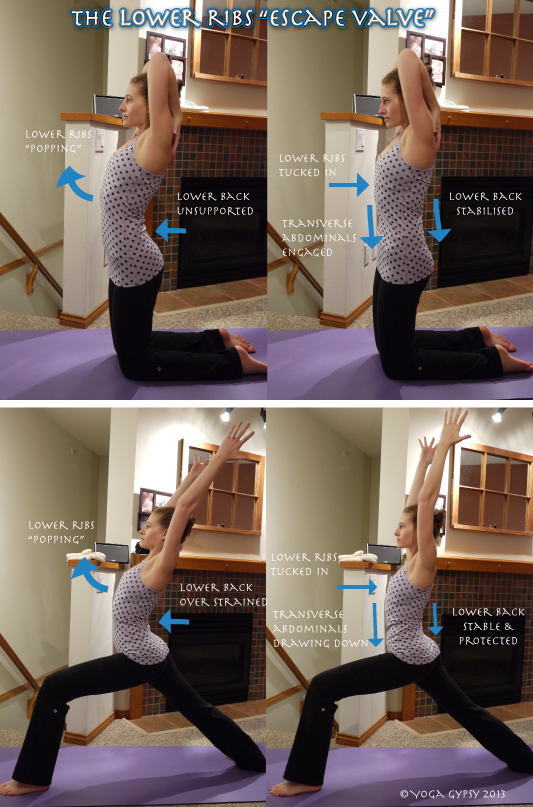Someone marvellous shared this funny little graphic on Facebook, and it made me laugh out loud. Which is it's own form of yoga, by the way. It also made me think, on a deeper level, about that question of why we go to yoga, and how what was once an exclusive and sacred (not necessarily good things) discipline of spiritual seeking has become boiled down in our minds to one word: "flexible". Whence this post....
~~~~~~~~~~~~~~~~~~
Now that yoga is fantastically popularised and pretty much mainstream, the average modern yoga student probably isn't familiar with the roots of yoga, beyond knowing that it originated in India a long time ago (like, when movies where still in black and white? ;) ). Many probably remember from their parents' generation of yoga that it had some kind of a spiritual component, but our generation doesn't like having "foreign" spiritual ideas thrown at us when we go to a public space. We prefer billboards, commercials and glossy magazines telling us what the world is all about, thanks, telling us what to value, and what we are worth. We fervently defend our right to not to learn about alternative philosophies unless we deliberately choose to (it's such a chore), as opposed to considering it our right (duty) to deeply examine the many facets of an issue before making a decision. No, we prefer to make decisions first, generally in the time it takes to "like" something on facebook, and our world rewards us for having the strength of character to simplify life into clear-cut dichotomies upon which we can make snap decisions and express strong opinions. (Is it any wonder politics is f$^@#*ed??)
In any case,
I won't be the first or the last writer to comment on the disconnect between the roots of yoga as an integrated practice (mind - body - breath) and the narrative of modern postural yoga. Nor will I be the first or last to conclude that hey, to each their own, and if more people are doing yoga, then great, and there's nothing wrong with just doing asana to stay healthy (or bend yourself into a pretzel, or just feel good) and that being the end of it.
And to be honest with myself, and you,
as a yoga teacher I play my own part in perpetuating the dominant narratives about yoga. In my classes, I teach 95% asana and only 5% pranayama. Sometimes I teach "fancy" postures. My cues and explanations focus mainly on the physical body, peppered with frequent reminders to breathe, and smile, and "be present". Most of my students, even my long-term ones, don't know about the
koshas, or the
doshas, or
prakriti and
purusha, or
moksha, or any of the other fundamental building blocks that shape the yogic worldview.
Yet not only do I know a bit about these concepts, but I relate to them, enjoy thinking and talking about them, and believe they offer a valuable perspective, one that is much needed in the modern world. So
why do I help perpetuate the modern yoga narrative in all its bland, asana-focused-ness?
The truth is, I'm lazy. There is only so much time in a yoga class, and I have a cleverly designed sequence to get through, and still leave time for a long savasana.
The truth is, I'm concerned what my students will think. I believe they come to yoga expecting a work-out, and generally a tough one, at that, and I'm afraid that if I don't give it to them, they won't come back, they won't like me.
The truth is, my students paid for an asana class, not a philosophy class, and that's what I feel like I need to give them.
The truth is, I had to sign a contract agreeing not to preach my own personal philosophies during yoga class. Really. I did.
Edited to add: this is fair enough! It would be wrong to use my privileged position as a yoga teacher to tell others what to think or believe. But, where is the line between discussing yoga philosophy and "preaching a personal belief"? Some people are offended at even the use of sanskrit in a yoga class - in any case, it makes me nervous.
The truth is, my own practice is pretty much asana dominated, my meditation and pranayama having somehow slipped out and not quite been put back in.
And so I go, and I teach, and I practice, and I perpetuate the modern yoga narrative, all the while
knowing that it doesn't satisfy me.
*It doesn't satisfy me.*
But I smile and stand in front of a class, and
perpetuate the narrative, because that is what's expected (obligated?) of me and because that's what I know how to do.
Yet I believe that there is a space in a yoga studio for honest conversation. A space for education that goes beyond the physical. For the exchange of points of view,
the discussion of complex concepts that can't be resolved in the time-it-takes-to-click-like-on-facebook.
A space where people are willing, have the courage, are thirsty to go beyond the physical and examine, re-examine, their relationships with themselves and the world.
I believe in that space - and that I can play a part in creating it. That I must help to create it, each time I step onto the mat.
Readers, what do you think?


